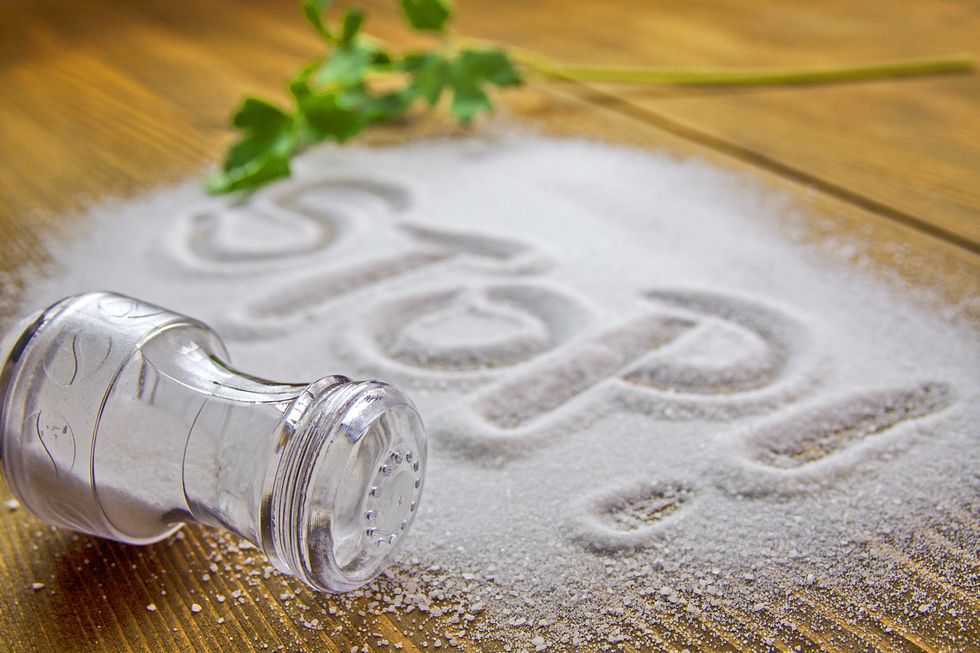
Every day we introduce double the amount due. And this exposes us to numerous health risks. But reducing the salt is not difficult. Also thanks to some "little help"
salt is essential to feel good and, in the right doses, it doesn't hurt anyone. Indeed it serves to tone the walls of blood vessels and to regulate the amount of water present in the human body. In fact, every day, to function properly, our body needs 5 grams of salt, which is the equivalent of a coffee spoon. An amount largely covered by that contained in the foods that are eaten daily. In fact, every day, we ingest about 10 g, which is almost double the amount needed. A real salt overdose alarm. This is why WHO has officially asked institutions and scientific societies to reduce global salt consumption by 30% by 2025. But consumers must also do their part: to be aware that we eat too salty, that this predisposes us to various health problems. And therefore try to limit the daily quantities. To do this you can take advantage of many "little help".
UNDERSTAND THE PROBLEM
The first useful tool is the questionnaire developed by the Italian Nutrition Society (Sinu): by connecting to the site and answering a few simple questions, you can obtain your salt consumer profile in less than a minute. Not only that: reading the questions already gives us a clear idea of how the salt gets in abundance on our plates and how we can do to limit it, starting from when we are busy shopping at the supermarket. A nice exercise in awareness, then.
ABOLISH THE SALT HALL
Italians are buying less and less salt: according to the Imagine Observatory, in one year overall purchases of salt decreased in volume by 2.1%. The decline did not spare even dietary salt (such as iodized salt). So, Italians consume less salt than in the past, proving that they don't bring it to the table and don't even use it for cooking (and least of all in baby food) seems difficult (and at first it is) but then it becomes a habit healthy. To accustom the palate to appreciate the original flavor of food and therefore not to use salt, just reduce it progressively. A little effort simpler than you think: in fact, by making a habit of introducing less, the level in the saliva is lowered and the ability of the taste buds to distinguish the salty taste increases. So in a few days an adaptation takes place that allows you to find tasty dishes that until recently would have been tasteless. If you really can't eat "bland", here's the little help: season dishes only with spices and herbs or with lemon juice and vinegar. Or replace it with nuts. Being made of monopodium glutamate, which contains about a third of the sodium present in table salt and is used in smaller quantities, they can help reduce the amount of sodium contained in a dish by 20 to 40%, while keeping the taste unchanged.
DO THE RIGHT SHOPPING
What makes Italian cuisine too salty is not so much the pinch of salt added in the water of the pasta or in the fresh salad, but it is instead the frequent use of foods very rich in sodium: 70% of the salt we ingest every day is in fact supplied by the foods in which it is added during processing. But we don't realize it. In fact, sodium is present in many common foods: in canned foods (meat, tuna, etc.), in sausages, in frozen ready meals or in bags (pasta, preserved soups), in preserves and pesto, in sauces (such as mayonnaise and ketchup, but especially soy sauce), pickles, biscuits and rusks, breakfast cereals and smoked salmon. And above all in bread, which represents the first food source of salt in the Italian diet, given the frequency and regularity with which it is consumed. It should be recognized that food manufacturers are working on many fronts to offer foods with less sodium: by monitoring the nutrition labels of 46,600 packaged foods, the Immagino Observatory found that, in one year, the salt content of products sold in supermarkets is decreased by 0.7%. Therefore, the fight against salt begins with careful shopping: it is always necessary to read the labels of food products and prefer to purchase those with a reduced salt / sodium intake or even without. The presence of salt is indicated by these ingredients: sodium chloride, sodium bicarbonate, monosodium phosphate, monosodium glutamate, nitrate and sodium nitrite. In nutritional labels you need to look for the amount of sodium, remembering that 1 gram of sodium is equivalent to 2.5 grams of salt. The choice of products defined on the packages as "low-salt" or "salt-free" (in reality, they contain it but in modest quantities, between 0.02- 0.04%) is increasingly wide: according to 'Observatory I imagine these products represent 0.8% of packaged products sold in modern distribution and in one year they have seen sales increase by as much as 7.2%.







